Is there really any difference between organic chicken and non-organic chicken?
Christmas: the most wonderful – and, we have to say it, wasteful – time of the year.
As the festive season kicks into full swing and the shops start to pile high with sugary treats and glittery packages, it comes as no surprise that each household’s waste increases by 30 percent over the Christmas period.
Across the UK, each year we allegedly throw out around 300,000 tonnes of card packaging, somewhere in the region of one billion cards, and around seven million Christmas trees. Oh, and enough tin foil to cover Suffolk.
The zero-waste movement then is seemingly the antithesis of Christmas – this time of huge consumption and over-indulgence. But, far from being the Seasonal Scrooge, buying a more eco-friendly Christmas means all of the joy of the feast without the guilt of chucking huge amounts of leftovers in the (compost) bin and adding to the mountains of rubbish once celebrations are over.
“Bin collections go up by 30 per cent over Christmas. It’s a time of remarkable waste, so I’m not going to buy anything,” Tom Hunt, eco chef and author of Eating for Pleasure, People and Planet, told us a couple of years ago. He was well ahead of the game.
The restriction sounds extreme, but a more considered Christmas does not necessarily require going cold turkey, à la Hunt. If we all make small changes each year it creates a big impact. We’ve collected some tips from the zero-waste experts to get started, starting with the all-important Christmas meal…
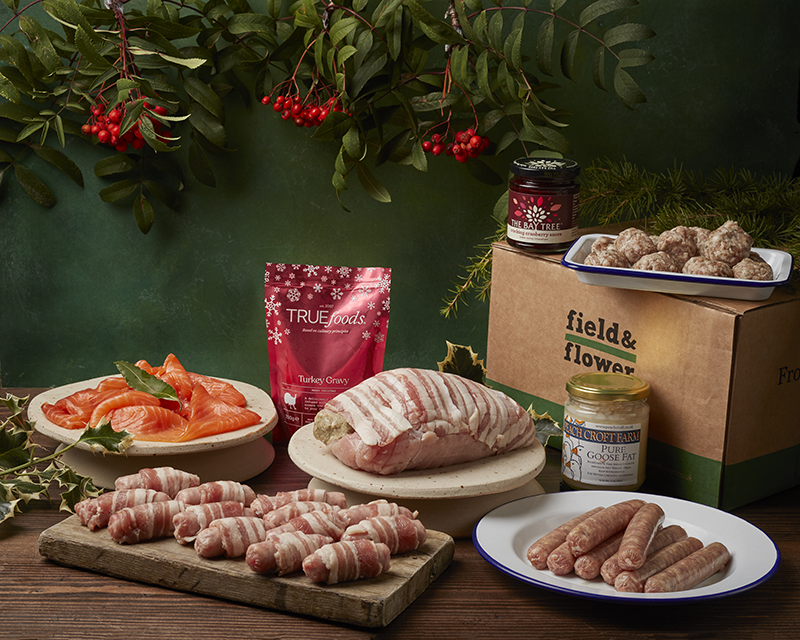
1. ECO-FRIENDLY CHRISTMAS FOOD
Yes, one way to create minimal food waste is to eat EVERYTHING, and we won’t judge you if you do. But ensuring there is zero waste really starts with a more conscious approach to buying…
Zero-waste Christmas food shopping
And while zero-waste Christmas grocery shopping seems like a challenge, food-waste campaigner Tom Hunt insists this period of time allows him to be creative and learn new habits.
“You’re limited because you have to plan a bit more. But, then your options improve. It forces you to seek out the better producers – at a farmers market, via vegetable box schemes or health food shops,” he says.
“You start connecting with the people who are growing your food and become part of a community, which is what Christmas is all about.”
Packaging is one of the biggest problems when it comes to food waste. Try to buy loose fruit and vegetables where possible.
Food box schemes often use less packaging and are usually open to requests to take back boxes.
There’s also a growing number of ‘bulk buy’ shops across the UK where you can take your own refillable containers, from The Zero Waste Shop in Totnes to Bulk Market in Hackney. In fact, we’ve even tracked down the best plastic-free shops in London according to your neighbourhood. You are very welcome.
Zero-waste lifestyle guru Kate Arnell recommends the Bulk locator to find stores near you that also sell oils, wine, beer and coffee in refill form. Bonus: these can make lovely gifts, too.
Zero-waste Christmas cooking
But, back to the cooking. Here, Hunt’s root-to-fruit philosophy is key. “A lot of people don’t consider peeling their vegetables a waste,” says the chef. “But a lot of the nutrients are in the skin.”
So brush carrots and potatoes rather than peel them. If you do peel, save the skins to make vegetable crisps. For cauliflower cheese, treat the leaves as you would the cauliflower. Slice them finely, steam or boil them and make them part of the dish. It’s delicious and colourful. We promise.
2. ECO-FRIENDLY CHRISTMAS GIFT WRAP
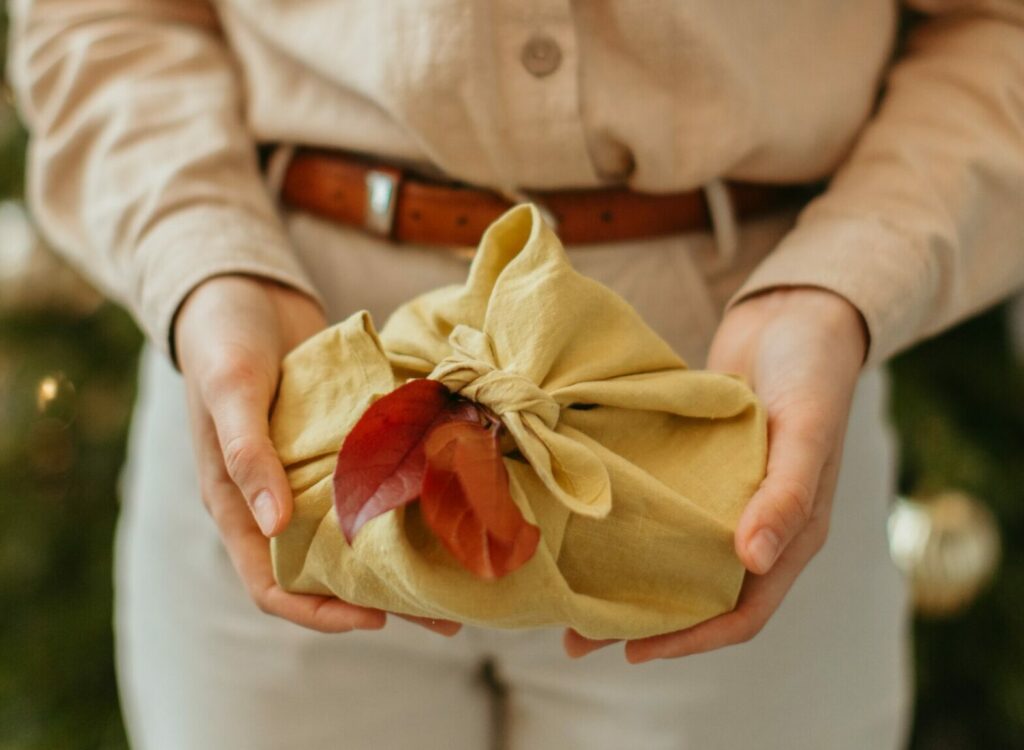
When it comes to gift wrap, in the UK we chuck away enough paper to circle the globe a staggering nine times (at least) every Christmas.
The golden rule of sustainable wrapping is to avoid shiny metallic wrapping paper and gift wrap with glitter, as it can’t be recycled. The simple ‘scrunch test’ determines whether paper can be recycled; if it holds its shape when scrunched then it is recyclable. If paper springs back, it is not.
DIY Christmas wrapping paper
Founder and head chef of Britain’s only zero-waste restaurant, Silo, Doug McMaster says: “Not buying new wrapping paper forces creativity and that’s a wonderful thing.”
Yesterday’s newspaper isn’t only good for chip-shop chips. McMaster suggests using images from newspapers and using butcher’s twine rather than sellotape. Add a sprig of green for a festive touch. But, choose your images and text carefully…
You could also save yourself some money by upcycling old biscuit/chocolate tins (which we tend to get lots of this time of year). Once you’ve cleaned out all the crumbs, they make an effective gift box – line them with old tissue paper or, even better, leave them bare.
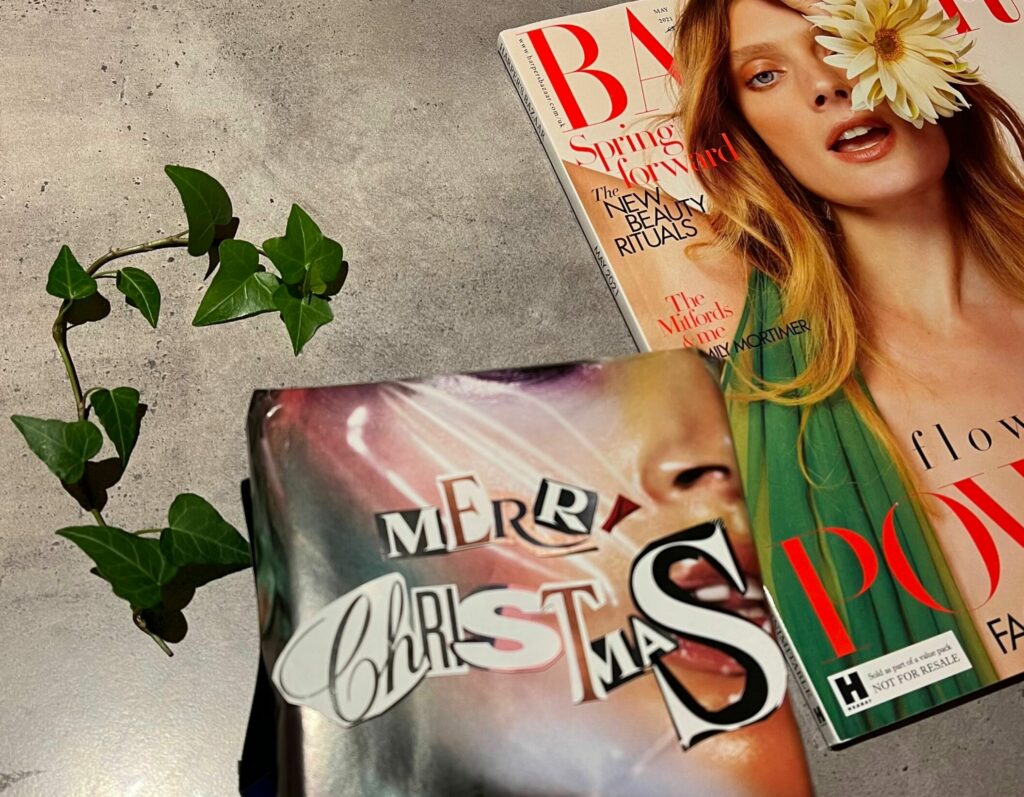
Reusable Christmas wrapping
Another option for eco-friendly gift wrapping is reusable fabric.
If you want some serious inspo, look up furoshiki – the Japanese art-form of wrapping gifts in fabric.
Search for #Furoshiki on Instagram and discover the beauty of the ancient Japanese tradition of wrapping gifts in fabric – anything from scarves to pillowcases.
Another good idea is to buy some (organic cotton) tea towels. These can be a great shape for wrapping and are useful, too. Or for beautiful fabrics try FabRap, a website offering absolutely gorgeous GOTS-certified organic cotton materials in an array of festive prints.
For more eco-friendly options read our sustainable wrapping paper article.
3. ECO-FRIENDLY CHRISTMAS CARDS
Of course, where there’s a Christmas present, a Christmas card is always in tow. It’s estimated that around one billion Christmas cards are sold in the UK each year – the equivalent of 33 million trees. EEK. That’s where all those trees planted as offsets are going!
If you’re trying to make more sustainable choices this festive season, our first question would be is there really a need to buy everyone you know a Christmas card? Or could you just get one for your Nan?
Because we’re not convinced Zero-Waste cards are really a thing.
For more eco-friendly options read our sustainable Christmas Cards article.
4. ECO-FRIENDLY CHRISTMAS DECOR
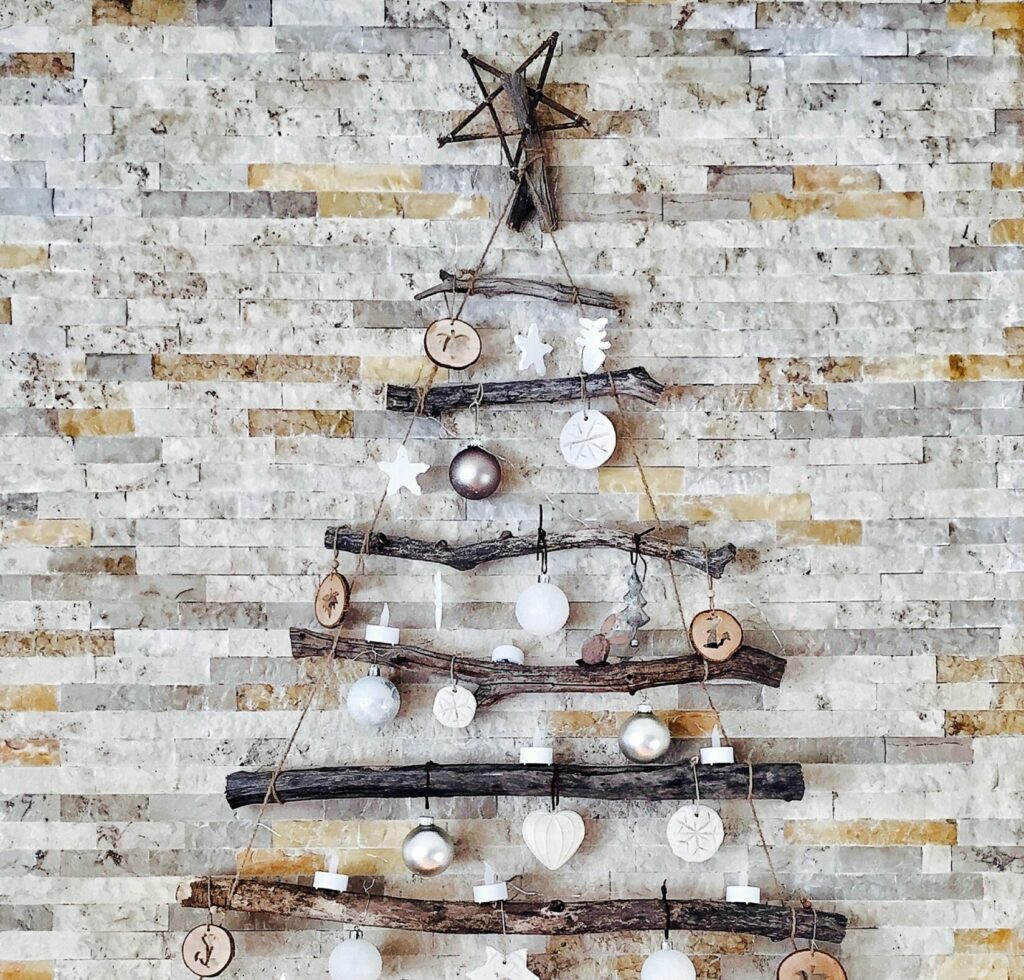
Our favourite sustainable DIY Christmas hack has to be spending a crisp winter’s day collecting wood and making your own Christmas tree, as pictured.
You can then warm up by making dried orange slices to hang on it as decoration.
All you do is pop slices of orange sprinkled with cinnamon on a cooling rack in the oven at about 120C for a few hours, then tie them with twine when cool.
They last for years or you can add them to a pot with some cloves to make potpourri when the festive season is over.
5. ECO-FRIENDLY CHRISTMAS CRACKERS
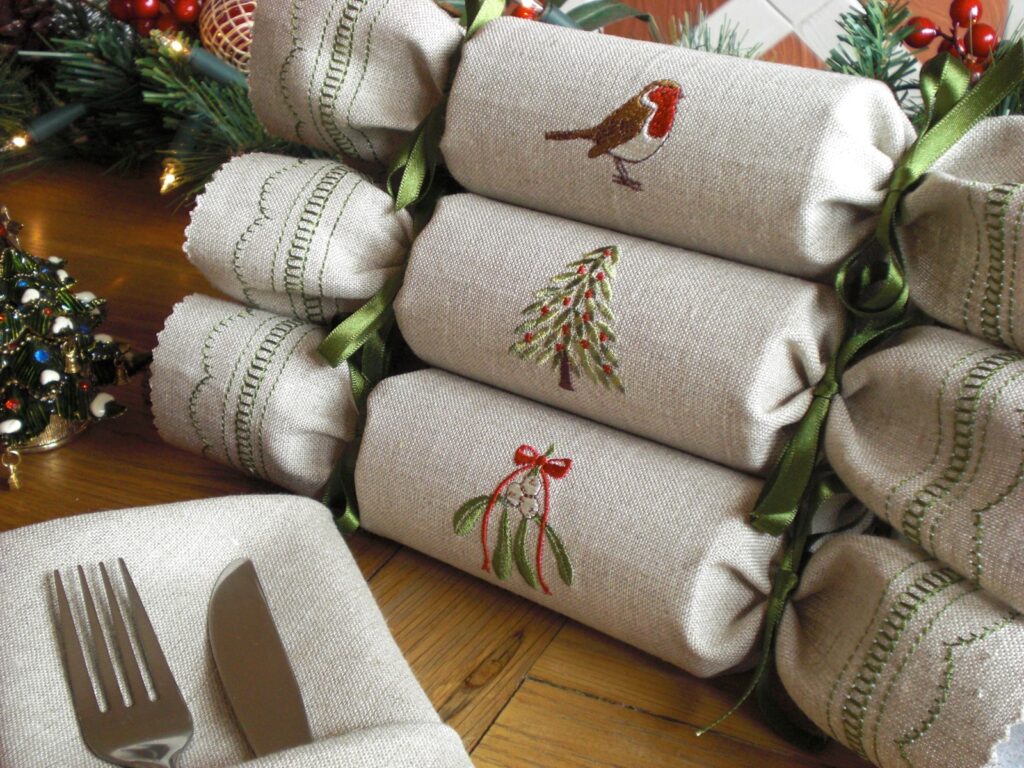
A Christmas cracker is a Christmas staple. But, when the bad jokes are the best thing about them, you know something’s not quite right.
If you feel like no Christmas table is complete without a cracker and bang, here are some great zero-waste alternatives to the supermarket classic:
Reusable crackers
Kate Spronston’s eco-friendly reusable embroidered crackers are handmade in the UK using recycled cardboard inner tube, 100% natural linen, embroidered with satin thread, complete with green satin ribbon ties.
And though they are snap free, you can still make a bang: fill them with your own message and special gift – perhaps money, tickets, or vouchers.
Why waste money on cheap glitter cardboard tubes that go straight in the bin? These crackers look great and are a lovely investment that will stay with you year after year (just be careful with the gravy).
For more eco-friendly options read our sustainable Christmas crackers article.
6. ECO-FRIENDLY CHRISTMAS TREES
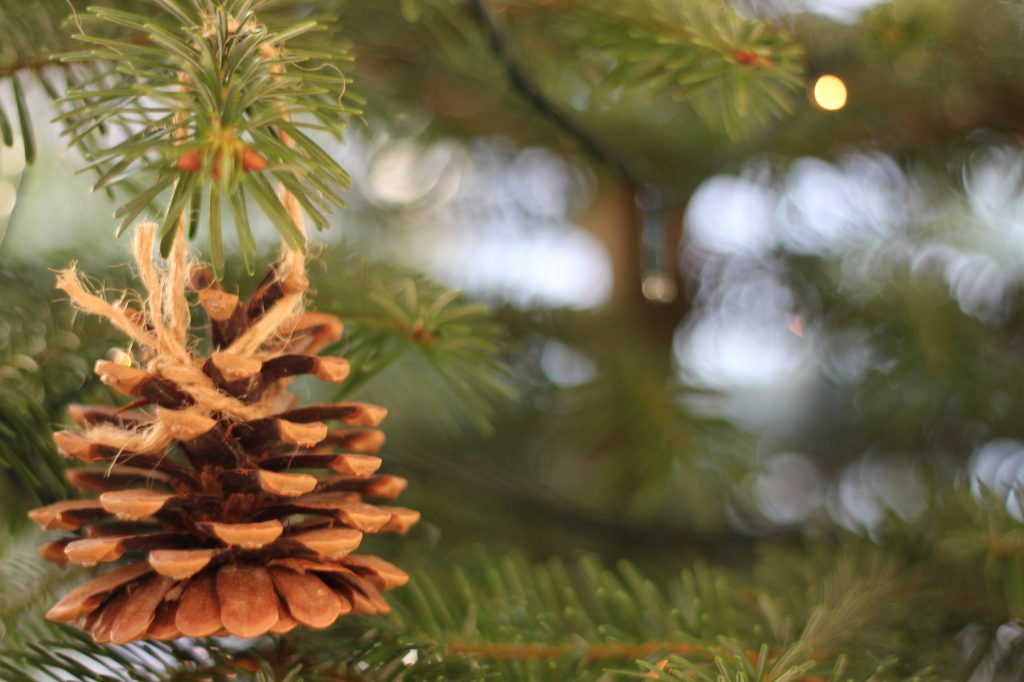
Christmas trees are essentially a crop to be harvested. A six-foot tree typically takes about nine years to grow, during which time they provide a habitat for wildlife, consume carbon dioxide and create oxygen. So, they are generally carbon positive.
The issues come with transportation and then disposal. Around six million trees are sold each year, and if sent to landfill they take years to decompose, releasing methane which is said to have 25 times the potency of carbon dioxide.
Potted trees
The most zero-waste way to get a real Christmas tree is to buy a potted one that can be replanted year after year, as locally as possible to reduce the carbon footprint.
If potted isn’t for you, the good news is non-potted real trees can be recycled into wood chippings. If you’re buying a non-potted Christmas tree, check your local council’s website to find out how their free recycling service operates. Forest Stewardship Council Certified trees are some of the responsibly-managed trees and often minimise pesticide use.
Tree Rentals
Another option is to rent a real Christmas tree. Essentially this service allows you to buy a potted sustainable Christmas tree and then send it back to be re-planted after the festive period. You can start a new family tradition and request the same one year after year, even naming your tree if you’re so inclined.
Not only is this a great no-fuss option, where you avoid the guilt of failing to keep your tree alive, but it’s also a brilliant way to cut down on your Christmas waste.
There are several tree rental companies around. A couple of options include London Christmas Tree Rental and the fabulously named Rental Claus in the Cotswolds. Select to either pick up and return yourself or arrange for it to be delivered to your home and to be collected again in January. It really is that simple.
For more eco-friendly options read our sustainable Christmas Trees article.

